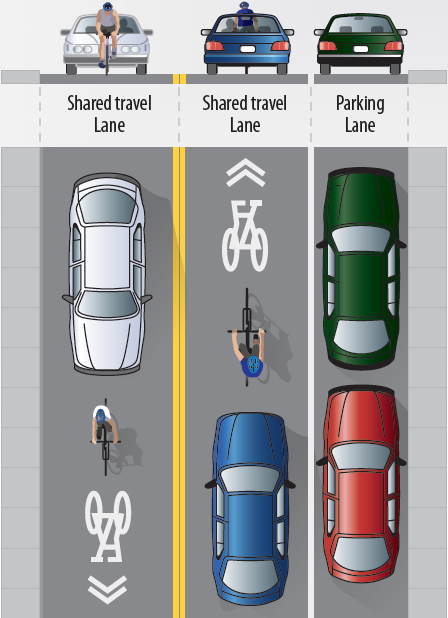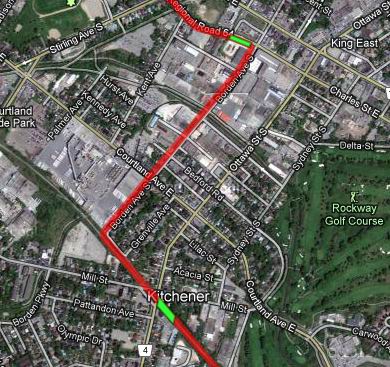
Supporting an evidence-based approach to cycling infrastructure
As many readers may be aware, Kitchener is proceeding with a plan to introduce sharrows to King Street in downtown Kitchener, along with new bike racks, public events, and other measures designed to make promote cycling and improve the understanding of sharing the road among cyclists and motorists.
TriTAG supports the proposals in the Cycling Facilities and Downtown Branding report – the City staff responsible should be commended with such forward-thinking initiatives and thorough analysis. We would like to speak in particular about the plan to add sharrows to King Street in downtown Kitchener, and the critical importance of measuring the effect of this improvement.
In 2010, TriTAG saw an opportunity to measure the effects of new cycling lanes and markers in the city of Guelph. Over the next two years, we were able to gather evidence that showed: More citizens chose to cycle, and fewer rode on the sidewalk. This report has been of great use to the City of Guelph – all from a few volunteers taking time off of work to sit in brisk early morning temperatures at the side of the road with clipboards. If we’d had the right resources to allocate to further study, we would have been able to accomplish even more.
The “Kitchener Cycling Branding and Downtown Cycling Facilities” report draws from the experience of cities like San Francisco, Miami Beach, Seattle, and Cambridge, Massachusetts. Experience there suggests that sharrows can work well where space is at a premium and traffic speed is low – but we lack study of local examples. In light of this, Kitchener staff, in collaboration with TriTAG and the Kitchener Cycling Advisory Committee, have developed a plan to measure the effect of sharrows in the downtown. We commend council’s support of the study – to assign a few hours of staff and volunteer time to measure the impact of this modest but important investment – because we believe that the sharrows approved for King Street can have a big impact – and that the city should have the proof to back up the success of their initiative.
Why stop here? We would love to see Kitchener take a more rigorous approach to measuring cycling traffic. Plans to gauge the effect of new cycling infrastructure over time ought to be routine. Our city needs to understand cause and effect if we’re going to live up to the cycling master plan’s vision of doubling cycling trips every three to five years. Learning what works is important – without measuring, we cannot truly say what works and what doesn’t.
As this report shows, we can learn from the experiences of other cities; with the addition of better measurement on our part, not only can we learn from our own experiences as well, but we can provide Kitchener’s hard data approach to measurement as a gold standard when other communities come calling to ask how we built a more efficient and complete cycling network.



